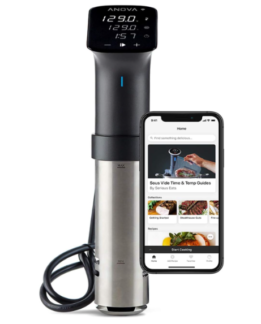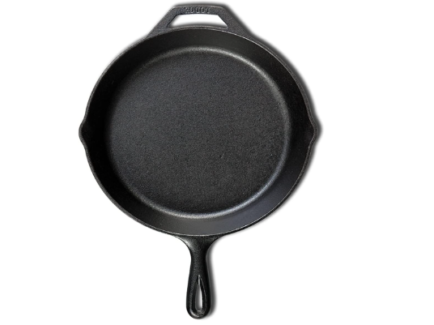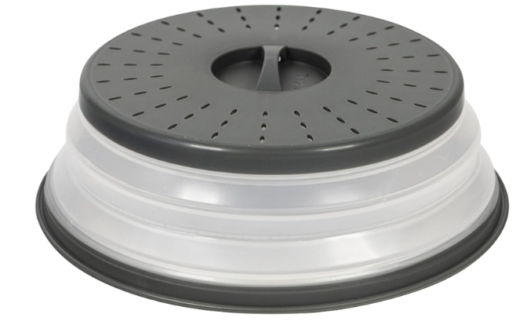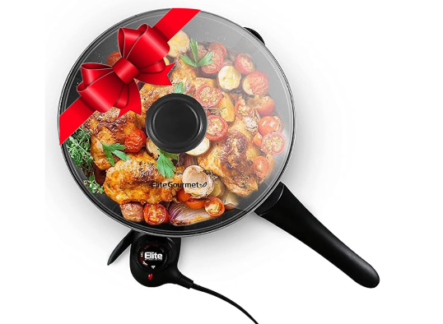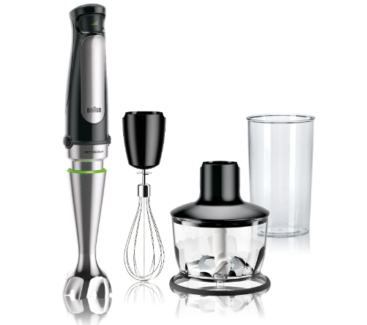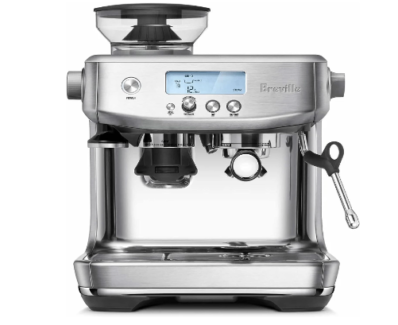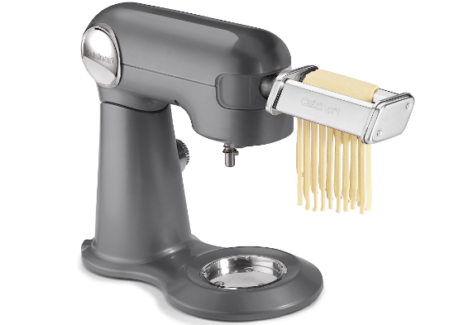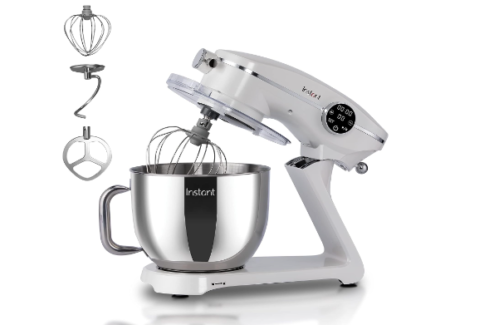Rice is a staple food that is enjoyed by people around the world. It is a versatile ingredient that can be prepared in various ways, including using the Instant Pot. The Instant Pot is a multi-functional electric pressure cooker that has gained popularity for its convenience and efficiency in cooking.
Using the Instant Pot to cook rice offers several advantages. It simplifies the cooking process, saves time, and consistently produces fluffy and perfectly cooked rice. The Instant Pot provides precise temperature control and creates a sealed cooking environment that allows the rice to cook evenly and retain moisture.
To cook rice in the Instant Pot, you typically start by rinsing the rice to remove excess starch. Then, you add the rinsed rice and the appropriate amount of water or broth to the Instant Pot. The water-to-rice ratio may vary depending on the type of rice you are cooking. It’s recommended to consult the specific instructions for the type of rice you are using.
After adding the liquid and rice to the Instant Pot, you seal the lid, select the appropriate cooking function (such as “Rice” or “Manual”), and set the cooking time. The Instant Pot will then pressurize and cook the rice for the designated time.
Once the cooking cycle is complete, you can allow the Instant Pot to naturally release the pressure for a few minutes, or you can use a quick-release method to release the pressure manually. After releasing the pressure, you can fluff the rice with a fork, and it is ready to be served as a side dish or as a base for various recipes.
The Instant Pot simplifies the rice cooking process by automating the cooking time and temperature control, ensuring consistent results and reducing the risk of undercooked or overcooked rice. It is a convenient tool for preparing delicious and fluffy rice with minimal effort.
Can you cook rice in Instant pot?
Yes, you can absolutely cook rice in an Instant Pot. In fact, the Instant Pot is well-known for its ability to cook rice quickly and easily. Whether you prefer white rice, brown rice, jasmine rice, basmati rice, or any other variety, the Instant Pot can handle them all.
Is rice cooker or Instapot better for rice?
Both rice cookers and Instant Pots are capable of cooking rice effectively, but the choice between the two depends on personal preferences and needs. Here’s a comparison to help you decide:
Rice Cooker:
- Specialized function: Rice cookers are designed specifically for cooking rice and often offer different settings for various types of rice (e.g., white, brown, sushi). They are optimized for achieving perfectly cooked rice consistently.
- Simplicity: Rice cookers are straightforward to use. You simply add rice and water, select the desired rice type or cooking mode, and let it cook. Rice cookers typically have simple controls and fewer options compared to the multi-functionality of Instant Pots.
- Dedicated appliance: Rice cookers serve the sole purpose of cooking rice, which may be appealing if you primarily use it for rice and prefer a specialized device.
- Capacity: Rice cookers come in various sizes, allowing you to choose a capacity that suits your needs. Larger rice cookers can accommodate more rice for larger gatherings.
- Keep warm function: Most rice cookers have a keep warm function that keeps the cooked rice warm until it’s ready to be served.
Instant Pot:
- Multi-functionality: Instant Pots offer a wide range of cooking functions, including pressure cooking, slow cooking, sautéing, and steaming. If you desire versatility and want a single appliance that can perform multiple cooking tasks, an Instant Pot may be a better choice.
- Convenience: Instant Pots are known for their convenience and time-saving features. They can cook rice quickly under pressure, making them suitable for busy individuals who want to prepare meals efficiently.
- Additional cooking modes: In addition to rice, an Instant Pot can handle various recipes and ingredients. If you enjoy experimenting with different cooking methods and recipes beyond rice, an Instant Pot provides more flexibility.
- Space-saving: If kitchen counter space is limited, an Instant Pot can be a space-saving solution as it combines multiple cooking functions in one appliance.
- Learning curve: Instant Pots have a bit of a learning curve, especially if you’re new to pressure cooking. Understanding the settings, cooking times, and pressure release methods may take some time to master.
Ultimately, the choice between a rice cooker and an Instant Pot depends on your cooking preferences, the range of recipes you plan to prepare, and the convenience features you value. If you primarily cook rice and prefer a dedicated appliance for it, a rice cooker may be a better option. However, if you want versatility and the ability to cook a variety of dishes beyond rice, an Instant Pot offers more functionality.
Which kinds of Instant pot can cook rice?
All Instant Pot models have the ability to cook rice. Instant Pot is a brand that offers a variety of multi-functional electric pressure cookers, and they all include rice cooking functions. Whether you have the Instant Pot Duo, Ultra, Lux, Nova, Max, or any other model, you should be able to cook rice using the designated rice cooking setting or the manual pressure cooking function.
The specific rice cooking settings and options may vary slightly between models, but they are generally designed to handle various types of rice, including white rice, brown rice, jasmine rice, basmati rice, and more.
It’s always a good idea to consult the instruction manual or recipe guide that comes with your specific Instant Pot model for detailed instructions on how to cook rice and the recommended settings for different rice varieties.
Why is rice better in Instant Pot?
Cooking rice in an Instant Pot offers several advantages that make it a popular choice for many people. Here are some reasons why rice is often considered better in an Instant Pot:
- Convenience: The Instant Pot is known for its convenience. It simplifies the cooking process by automating temperature control and cooking time. You can simply add the rice and water, select the appropriate settings, and let the Instant Pot do the work. It eliminates the need for constant monitoring and stirring, allowing you to attend to other tasks while the rice cooks.
- Time-saving: The Instant Pot cooks rice much faster than traditional stovetop methods. It utilizes pressure cooking technology to cook rice more rapidly. The cooking time for rice in an Instant Pot is significantly reduced, which is particularly beneficial for those who want to prepare meals quickly or have limited time.
- Consistent results: The Instant Pot provides precise temperature control and creates a sealed cooking environment. This allows for even heat distribution and consistent results every time you cook rice. You can expect fluffy and evenly cooked rice without the risk of burning or uneven cooking that can occur on a stovetop.
- Set-it-and-forget-it: Once you set the cooking time and select the appropriate settings on the Instant Pot, you can walk away and let it do its job. The Instant Pot will automatically cook the rice and switch to a keep warm mode once the cooking cycle is complete. This feature is convenient, especially when you have other tasks to attend to or need to keep the rice warm until serving.
- Versatility: While the Instant Pot is primarily known for pressure cooking, it is a multi-functional appliance that offers various cooking modes. Apart from cooking rice, you can use the Instant Pot for steaming, sautéing, slow cooking, and even making yogurt. It’s a versatile kitchen tool that can handle a wide range of recipes and cooking methods.
It’s important to note that the advantages of cooking rice in an Instant Pot may vary depending on personal preferences and cooking habits. Some individuals may still prefer the traditional stovetop method or have specific techniques that yield their preferred results. Ultimately, the choice of cooking method for rice depends on individual preferences and the desired outcome.
What is the disadvantage of cooking rice in Instant pot?
While cooking rice in an Instant Pot offers numerous advantages, there are a few potential disadvantages to consider:
- Learning curve: Using an Instant Pot may require a learning curve if you’re unfamiliar with the appliance. Figuring out the correct water-to-rice ratios, cooking times, and pressure release methods for different types of rice can take some trial and error, especially for beginners. It may require some experimentation to achieve your desired rice texture.
- Limited capacity: The size of the Instant Pot can limit the amount of rice you can cook at once. While most Instant Pot models offer various sizes, the capacity of the inner pot may not be sufficient for cooking large quantities of rice for bigger gatherings or events. You may need to cook rice in multiple batches if you have a larger quantity to prepare.
- Potential for overcooked or undercooked rice: The precise cooking time for rice in an Instant Pot is crucial to achieving the desired texture. If the cooking time is not accurately adjusted for the specific type of rice, it can result in overcooked or undercooked rice. This can be particularly problematic if you’re new to using an Instant Pot or if you’re cooking a type of rice for the first time.
- Cleaning and maintenance: While the Instant Pot is relatively easy to clean, there are multiple components to clean, including the inner pot, sealing ring, and steam release valve. Proper maintenance and cleaning are necessary to prevent the buildup of residue and ensure the longevity of the appliance.
- Limited browning and crispy texture: Unlike stovetop cooking methods or using a rice cooker, the Instant Pot may not provide the same level of browning or crispiness to the bottom layer of the rice. Some people prefer the traditional method for achieving a crispy, golden layer of rice called “tahdig” in certain cuisines.
It’s worth noting that many of these disadvantages can be mitigated with practice, understanding the Instant Pot’s features and functions, and adapting to your preferences. While there are potential challenges, many people find that the benefits of cooking rice in an Instant Pot outweigh the disadvantages.
How to cook rice in Instant pot
To cook rice in an Instant Pot, follow these general steps:
- Rinse the rice: Rinse the rice under cold water to remove excess starch. This step helps prevent the rice from becoming too sticky.
- Add rice and water: Add the rinsed rice to the Instant Pot, followed by the appropriate amount of water or broth. The water-to-rice ratio may vary depending on the type of rice you are cooking. As a general guideline, for white rice, use a 1:1 ratio (equal parts water to rice). For brown rice, use a 1:1.25 to 1:1.5 ratio (1 1/4 to 1 1/2 parts water to rice). Adjust the ratio according to your preferred rice texture.
- Seal the Instant Pot: Securely place the lid on the Instant Pot, ensuring the steam release valve is set to the sealing position.
- Select the rice cooking function: Many Instant Pot models have a specific rice cooking function. If available, select the appropriate rice cooking function. Alternatively, you can use the manual or pressure cook function and adjust the cooking time accordingly.
- Set the cooking time: Set the cooking time based on the type of rice you are cooking. For white rice, a general guideline is to cook for 3-8 minutes under pressure. For brown rice, cook for 20-25 minutes. Adjust the cooking time based on your specific rice variety and personal preference.
- Cook under pressure: Once you have set the cooking time, the Instant Pot will start building pressure and cook the rice accordingly.
- Natural release or quick release: After the cooking cycle is complete, you can choose between a natural release or a quick release. For a natural release, allow the Instant Pot to release the pressure gradually on its own, which takes approximately 10-15 minutes. For a quick release, carefully turn the steam release valve to the venting position using a long utensil, following the Instant Pot’s safety instructions.
- Fluff and rest: After releasing the pressure, carefully open the Instant Pot lid. Fluff the cooked rice with a fork to separate the grains and allow any excess steam to escape. Let the rice rest for a few minutes before serving to allow it to settle and absorb any remaining moisture.
Remember, these steps provide a general guideline for cooking rice in an Instant Pot. Cooking times and water ratios may vary based on the specific type of rice and personal preference. It’s always a good idea to consult the instructions for your specific Instant Pot model and adjust accordingly for the best results.
How do you use the rice button on an Instant Pot?
Using the rice button on an Instant Pot is a convenient way to cook rice with minimal effort. Here’s how you can use the rice button on most Instant Pot models:
- Rinse the rice: Rinse the rice under cold water to remove excess starch. This step helps prevent the rice from becoming too sticky.
- Add rice and water: Add the rinsed rice to the Instant Pot, followed by the appropriate amount of water or broth. The water-to-rice ratio may vary depending on the type of rice you are cooking. As a general guideline, for white rice, use a 1:1 ratio (equal parts water to rice). For brown rice, use a 1:1.25 to 1:1.5 ratio (1 1/4 to 1 1/2 parts water to rice). Adjust the ratio according to your preferred rice texture.
- Seal the Instant Pot: Securely place the lid on the Instant Pot, ensuring the steam release valve is set to the sealing position.
- Use the rice button: Look for the rice button on your Instant Pot control panel. Press the rice button to select it. Depending on your model, the rice button may be labeled “Rice,” “Rice/Grain,” or have a specific rice symbol.
- Let the Instant Pot do the work: After selecting the rice button, the Instant Pot will automatically adjust the cooking time and temperature based on the selected function. It will start building pressure and cook the rice accordingly.
- Natural release or quick release: Once the cooking cycle is complete, the Instant Pot may switch to a keep warm mode. You can choose between a natural release or a quick release for the pressure. For a natural release, allow the Instant Pot to release the pressure gradually on its own, which takes approximately 10-15 minutes. For a quick release, carefully turn the steam release valve to the venting position using a long utensil, following the Instant Pot’s safety instructions.
- Fluff and rest: After releasing the pressure, carefully open the Instant Pot lid. Fluff the cooked rice with a fork to separate the grains and allow any excess steam to escape. Let the rice rest for a few minutes before serving to allow it to settle and absorb any remaining moisture.
It’s important to note that the rice button on different Instant Pot models may have slight variations in cooking times and settings. Always refer to the user manual of your specific Instant Pot model for precise instructions and cooking times for different rice varieties.
What is the ratio of water to rice in an Instant Pot?
The water-to-rice ratio in an Instant Pot can vary depending on the type of rice you are cooking. Here are some general guidelines for the water-to-rice ratio:
- White rice: For most varieties of white rice, a common water-to-rice ratio is 1:1. This means using equal parts water to rice. For example, if you are cooking 1 cup of white rice, you would typically use 1 cup of water.
- Brown rice: Brown rice requires slightly more water than white rice. A common water-to-rice ratio for brown rice is 1:1.25 to 1:1.5. This means using 1 1/4 to 1 1/2 parts water to 1 part rice. For example, if you are cooking 1 cup of brown rice, you would typically use 1 1/4 to 1 1/2 cups of water.
- Other rice varieties: Different rice varieties, such as jasmine rice, basmati rice, or wild rice, may have specific water-to-rice ratios that vary based on their unique characteristics and cooking requirements. It’s recommended to consult the specific instructions or package directions for these rice varieties to determine the appropriate water-to-rice ratio.
Keep in mind that these ratios provide general guidelines, and personal preferences for rice texture can vary. Some people prefer their rice to be softer and stickier, while others prefer it to be fluffier and more separate. You can adjust the water-to-rice ratio slightly to achieve your preferred rice texture.
It’s always a good idea to consult the instructions provided with your specific Instant Pot model and refer to the recommended water-to-rice ratios for the type of rice you are cooking.
How long should you cook rice in an Instant Pot?
The cooking time for rice in an Instant Pot can vary depending on the type of rice you are using. Here are some general guidelines for cooking times:
- White rice: For most varieties of white rice, the cooking time in an Instant Pot typically ranges from 3 to 8 minutes under high pressure. The exact cooking time depends on factors such as the desired texture (e.g., softer or firmer) and the specific Instant Pot model. Cooking times closer to 3 minutes will yield a softer texture, while longer cooking times closer to 8 minutes will result in a firmer texture.
- Brown rice: Brown rice generally requires a longer cooking time compared to white rice due to its higher fiber content. The cooking time for brown rice in an Instant Pot usually ranges from 20 to 25 minutes under high pressure. Again, the specific cooking time may vary based on the desired texture and your Instant Pot model.
- Other rice varieties: Different rice varieties, such as jasmine rice, basmati rice, or wild rice, may have specific cooking times based on their unique characteristics. It’s best to consult the specific instructions or package directions for these rice varieties to determine the appropriate cooking time in the Instant Pot.
It’s important to note that the cooking times provided are a general guideline and can vary based on factors such as the specific Instant Pot model, altitude, desired texture, and personal preference. It’s always recommended to refer to the instructions provided with your Instant Pot model or consult reliable recipes for precise cooking times for the specific type of rice you are using.
Tips for cooking rice in Instant pot
Certainly! Here are some tips for cooking rice in an Instant Pot:
- Rinse the rice: Before cooking, rinse the rice under cold water to remove excess starch. This helps prevent the rice from becoming too sticky.
- Adjust the water-to-rice ratio: The water-to-rice ratio may vary depending on the type of rice and personal preference. As a general guideline, use a 1:1 ratio for white rice and a 1:1.25 to 1:1.5 ratio for brown rice. You can slightly adjust the ratio to achieve your preferred rice texture.
- Use the correct Instant Pot setting: Most Instant Pot models have a rice setting or a specific rice cooking function. Select the appropriate setting for the type of rice you are cooking. If your Instant Pot doesn’t have a rice setting, you can manually set it to high pressure for the required cooking time.
- Let the pressure naturally release or quick release: After the cooking cycle is complete, you can choose between natural pressure release (NPR) or quick release (QR). Natural pressure release involves allowing the Instant Pot to release pressure on its own, which takes about 10-15 minutes. Quick release involves carefully turning the steam release valve to venting using a long utensil once the cooking time is over. Follow the Instant Pot’s safety instructions for pressure release methods.
- Fluff the rice: After releasing the pressure, carefully open the Instant Pot lid and fluff the cooked rice with a fork. Gently stir the rice to separate the grains and distribute any moisture evenly.
- Let the rice rest: After fluffing, let the rice rest in the Instant Pot with the lid off for a few minutes. This allows any excess moisture to evaporate and the rice to settle before serving.
- Adjust cooking time and water amount: If you find that the rice is consistently too firm or too soft for your liking, you can adjust the cooking time slightly. For firmer rice, decrease the cooking time by a minute or two. For softer rice, increase the cooking time by a minute or two. Similarly, you can adjust the water amount slightly to achieve your preferred rice texture.
Remember that these tips serve as general guidelines, and the specific cooking times and water ratios may vary depending on the type of rice and your Instant Pot model. It’s a good idea to refer to the instructions provided with your Instant Pot or reliable recipes for more precise measurements and cooking times for different rice varieties.
Related Posts
Why Trust Us
You will find what you are looking for at Jody's Bakery. From classic to luxury brands, you'll find both. We will help you to select appliances that fit your needs, budget and lifestyle. Whether you want to stop by to learn more — or plan to make a major purchase — we’ll treat you like family and assist you every step of the way. Shop with us today to receive friendly and experienced help along the way.

















